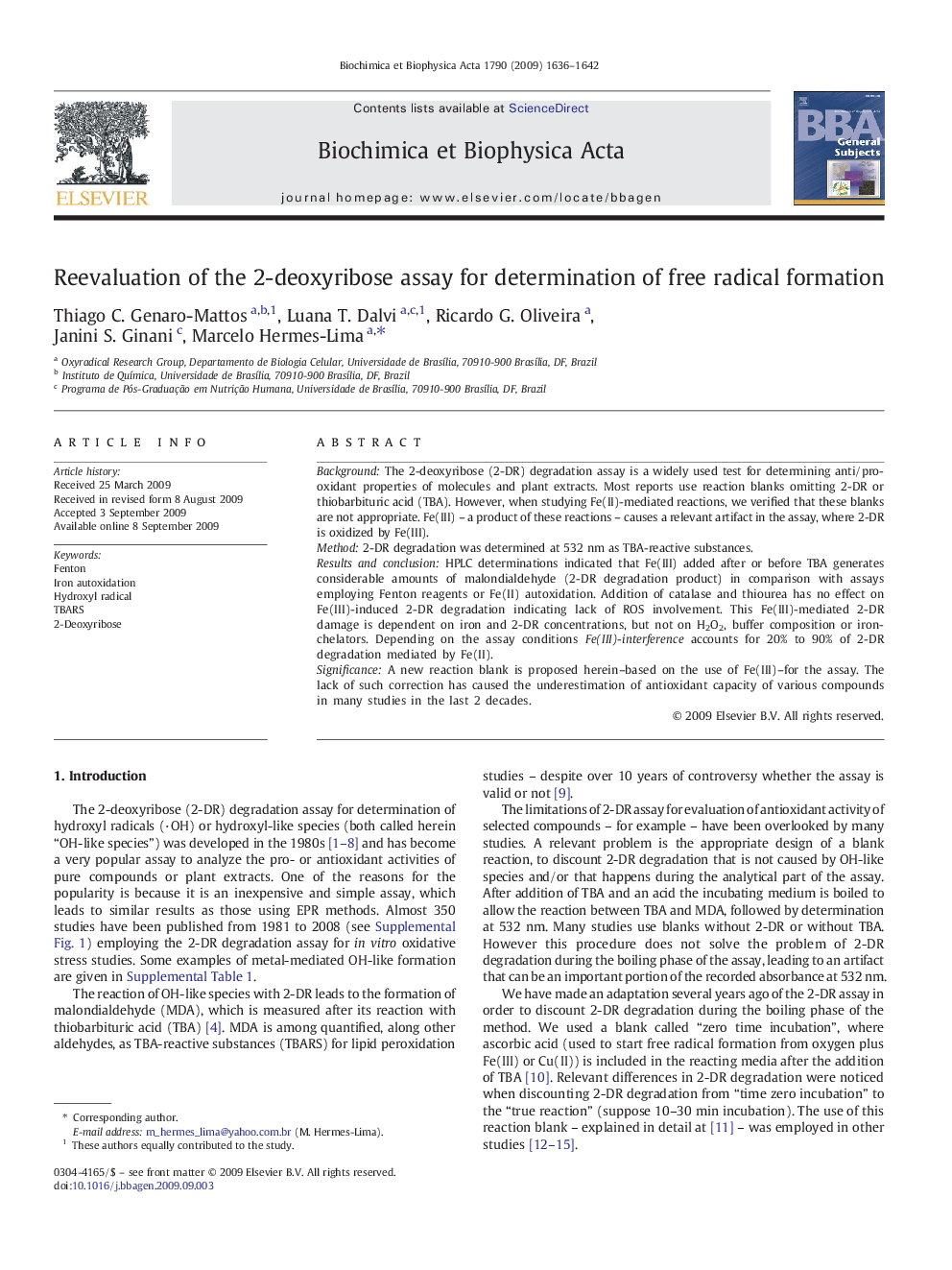| کد مقاله | کد نشریه | سال انتشار | مقاله انگلیسی | نسخه تمام متن |
|---|---|---|---|---|
| 1948208 | 1537489 | 2009 | 7 صفحه PDF | دانلود رایگان |

BackgroundThe 2-deoxyribose (2-DR) degradation assay is a widely used test for determining anti/pro-oxidant properties of molecules and plant extracts. Most reports use reaction blanks omitting 2-DR or thiobarbituric acid (TBA). However, when studying Fe(II)-mediated reactions, we verified that these blanks are not appropriate. Fe(III) – a product of these reactions – causes a relevant artifact in the assay, where 2-DR is oxidized by Fe(III).Method2-DR degradation was determined at 532 nm as TBA-reactive substances.Results and conclusionHPLC determinations indicated that Fe(III) added after or before TBA generates considerable amounts of malondialdehyde (2-DR degradation product) in comparison with assays employing Fenton reagents or Fe(II) autoxidation. Addition of catalase and thiourea has no effect on Fe(III)-induced 2-DR degradation indicating lack of ROS involvement. This Fe(III)-mediated 2-DR damage is dependent on iron and 2-DR concentrations, but not on H2O2, buffer composition or iron-chelators. Depending on the assay conditions Fe(III)-interference accounts for 20% to 90% of 2-DR degradation mediated by Fe(II).SignificanceA new reaction blank is proposed herein–based on the use of Fe(III)–for the assay. The lack of such correction has caused the underestimation of antioxidant capacity of various compounds in many studies in the last 2 decades.
Journal: Biochimica et Biophysica Acta (BBA) - General Subjects - Volume 1790, Issue 12, December 2009, Pages 1636–1642